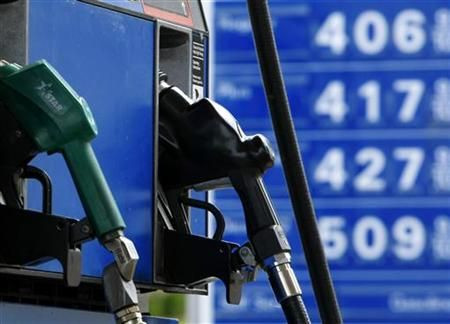Soaring Gas Prices: Why Does a Tiny Oklahoma City Exert So Much Control?

U.S. gasoline prices across have jumped 16 cents in a week, causing fear they could hit record highs soon.
The national gas price average reported by the American Automobile Association is only 38 cents below the all-time high of $4.11 set in July 2008.
One reason motorists enduring higher prices from Nassau County, N.Y. to Alameda County, Calif,. are all paying even more is because of Cushing, Okla., a city with a population of only 7,826.
Cushing happens to be the major oil hub where three dozen crude oil pipelines converge. That's why its oil price is the benchmark price gauge for U.S. crude oil on the N.Y. Mercantile Exchange.
Gasoline is refined from crude oil, which sold Wednesday for $105.84 a barrel. Trouble is, not all crude is refined in the same place.
Refineries and Pipelines
The U.S. is big. Transporting fuels is expensive. To cut down on costs, pipelines connect oil-producing regions to refineries, markets and, ultimately, your gas station.
But there aren't enough pipelines to go around to ensure a relatively constant national price. Some areas have more refining capacity than others. Crude oil gets shipped to a refinery, then needs to be transported again.
The Midwest, which hosts most of the country's pipelines - especially from Houston to Cushing to Chicago - has the lowest average gas prices for obvious reasons.
Making matters worse, several refineries are currently shut on the East Coast. And storage tanks in Cushing are overflowing with supply.
That's why motorists in Missouri can buy gas Wednesday for an average $3.47 a gallon. In New York, it's $3.96 and in California, $4.32 , the AAA reports.
Shale Booms and Oil Gluts
Domestic oil production has boomed thanks to developments in and around the Bakken Shale formation in the Dakotas and renewed production in the Permian Basin in Texas.
Production has jumped so much, pipelines can't carry it all. Refineries can't process it. The result is a temporary oversupply in non-processed crude oil in Cushing. This gets worse when consumers cut back on driving and buying gas.
When that happens, refineries produce less and prices go up still more in order to make up for lost revenue.
Crude Prices and Crude Trading
With too much oil in Cushing and no cost-effective way to ship it to markets along the Eastern and Western seaboard, refineries must buy foreign oil.
But international crude oil is more expensive, selling at $122.74 in London on Wednesday. That's why pump prices shoot upward.
The extra cost has already made ConocoPhillips and Sunoco back out of the Northeast as they look to sell or close down three refineries.
It's also why in a stretch like this, Cushing, Okla., in some respects, is the center of the U.S. gasoline world.
--
© Copyright IBTimes 2025. All rights reserved.





















